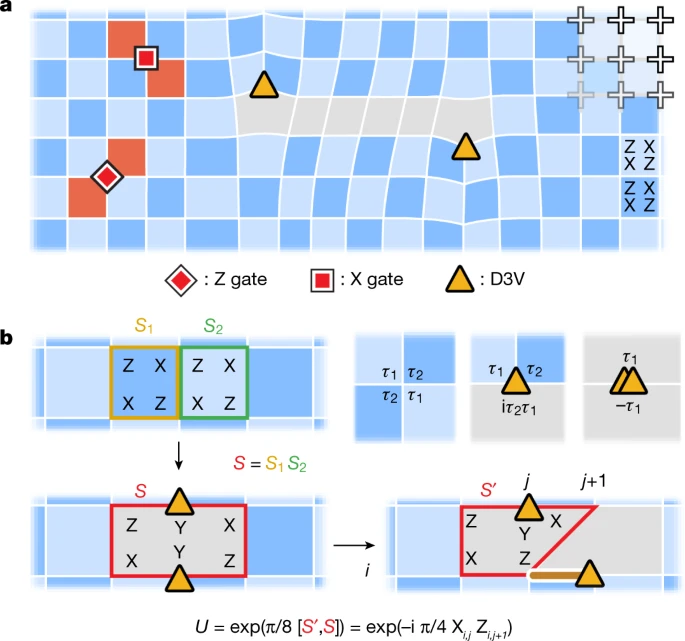Insider Brief
- Google Quantum AI researchers say they observed the peculiar behavior of non-Abelian anyons while using Google’s superconducting quantum computer.
- They also demonstrated how these anyons could be use in quantum computations.
- This is the second time this week that a major advance in the discovery of anyons — and how this could lead to more fault-tolerant quantum computers — was published. A Quantinuum-led team announced it had created and braided non-Abelian anyons.
For being so darn elusive the past couple decades, non-Abelian anyons are certainly not shying from the spotlight these days.
Building on a paper posted on the preprint server arXiv last October and now one posted in Nature, Google Quantum AI researchers say they observed these once-shy non-Abelian anyons while using Google’s superconducting quantum computer. They also demonstrated how the anyons could be use in quantum computations.
Google Quantum AI team member and the study’s first author, Trond I. Andersen says in Phys,org, “Observing the bizarre behavior of non-Abelian anyons for the first time really highlights the type of exciting phenomena we can now access with quantum computers.”

This news came soon after a Quantinuum-led team announced it had created and braided non-Abelian anyons. Microsoft has also chosen non-Abelian particles for their quantum computing approach.
While predicted for decades, finding and manipulating these particles has been — relying on a huge understatement — difficult. The drive for these non-Abelian anyons isn’t fueled merely by scientific curiosity, these quasiparticles form the basis for topological quantum computers, which, on paper, would be fault-tolerant. In other words, they would be less susceptible to environmental noise — heat, magnetism, etc. — that hold today’s quantum computers back.
Quite simply — and even more capitalistically — put: finding and manipulating non-Abelian anyones in a scalable, reliable way could usher in an era of quantum computing and completely shift the industry from its heavy reliance on error-correction software to achieve better performance than current classical and supercomputers.
Successful realization of a topological qubit-based quantum computer is a game changer, an industry changer and, possibly, a world changer.
Google Quantum AI’s Protocol
The researchers started by preparing their superconducting qubits in an entangled quantum state that was represented as a checkerboard. By stretching and squashing the quantum state of their qubits, they transformed the checkered pattern into oddly shaped polygons, hosting non-Abelian anyons at particular vertices.
Using a protocol developed by Eun-Ah Kim at Cornell University and former postdoc Yuri Lensky, the team could move the non-Abelian anyons around by deforming the lattice and shifting the locations of the non-Abelian vertices. The team observed the behavior of these non-Abelian anyons and how they interacted with the more mundane Abelian anyons. Weaving the two types of particles around one another yielded bizarre phenomena—particles mysteriously disappeared, reappeared and shapeshifted from one type to another as they wound around one another and collided.
The team observed the hallmark of non-Abelian anyons: when two of them were swapped, it caused a measurable change in the quantum state of their system. Finally, the team demonstrated how braiding of non-Abelian anyons might be used in quantum computations. By braiding several non-Abelian anyons together, they were able to create a well-known quantum entangled state called the Greenberger-Horne-Zeilinger (GHZ) state.

















